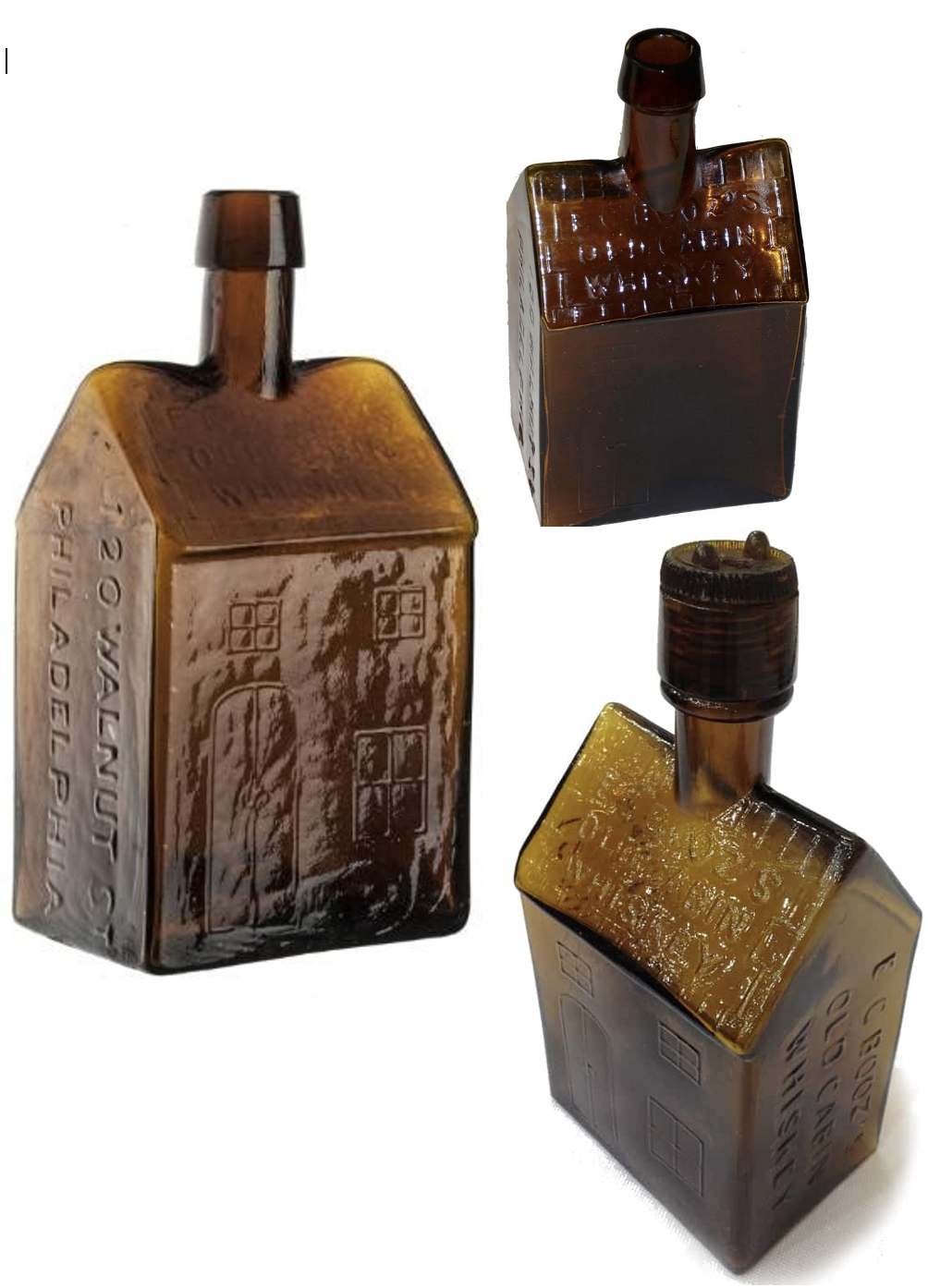E. G. Booz
What's In A Name
Did you ever wonder where the term “booze” may have originated? In 1840, Edmund G. Booz, a Philadelphia liquor merchant and importer, came up with the idea of partnering with his neighbor Walnut Street Whitney Glassworks to create an entire unique whiskey brand niche that remains popular today.
As the American Civil War approached, glass became hugely expensive, and because of this, whiskey was rarely sold in individual bottles. Instead, whiskey customers would typically bring their containers from home to the wholesaler. Capitalizing on this, Booz consorted with the glassworks to produce a refillable, unique log cabin-style bottle. The innovative and distinctive container was said to be inspired by Whig party candidate William Henry Harrison, whose 1840 presidential campaign established him as the “log cabin” nominee. This sharply contrasted with Harrison’s opponent, Democrat Martin Van Buren, the aristocratic, snobbish blueblood positioned as disinterested and unattached to the common whiskey-drinking folk.
Prototype Booz decanters were about 8” tall x 4” wide x 3” deep square amber molded glass, which held approximately one quart of liquid. Each featured exceptional detail for the time, with a prominent chimney, a natural cork stopper, shaker shingles, windows, and a door visible. Originals Booz cabins always incorporated “120 Walnut Street Philadelphia” on the side and “E.G. Booz Whiskey 1840” along the roofline. It is interesting to note that “1840” represented the date of the Harrison campaign, not the origin of the whiskey. However, it would have been clearly advantageous to Booz if the public failed to make this distinction. Later editions have similar but slightly different details.
Booz’s product was hugely successful throughout its run. However, it should be stated that Booz never made his own whiskey; he purchased whatever was available by the barrel and repackaged it in the log cabin container. It is thought that the bottles often contained a potion originating from Booz’s landlord, Jesse Godley, a distiller who owned a nearby warehouse. Nevertheless, the uniquely presented beverage remained admired and fashionable through the 1860s. In 1870, however, Edmund G. Booz died, and having no relatives interested in his relics, all his possessions and equipment were liquidated and quickly dispatched to the highest bidder.
Ultimately, Harrison beat Van Buren but fell ill soon after the inauguration and died three weeks later, becoming the shortest-tenured president in U.S. history. Similarly, with his death, Booz’s ordinary whiskey in the extraordinary bottle exited the market and remained forgotten for nearly 100 years. Then, in the mid-1950s, amid a decline in brown-liquid popularity, distillers were scrambling to develop novel decanters to entice new bourbon customers. So, at that time, a Bardstown distiller revived the Booz bottle with straight Kentucky bourbon. Though the second run contained no real legacy to the previous product, this whiskey also enjoyed respectable sales until about 1970, when the idea was again abandoned. Today, internet reproductions of Booz log cabin bottles remain one of eBay’s top glassware sellers, often fetching upwards of $100. Meanwhile, a certified original Booz cabin containing no liquid recently sold for $1,200.
Reference: Federation of Historic Bottle Collectors, www.fohbcvirtualmuseum.org, 2025.
Contributed by: Tracy McLemore, Dickson, Tennessee




